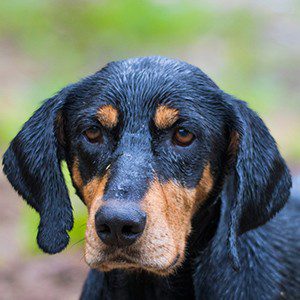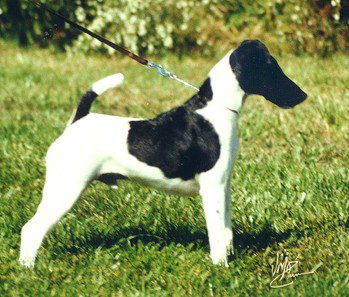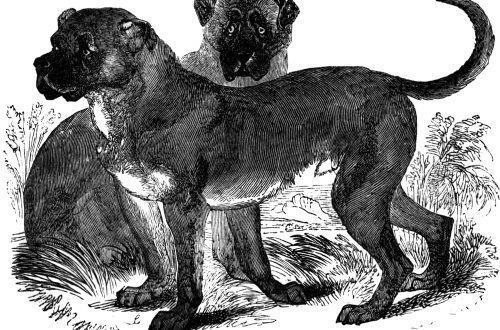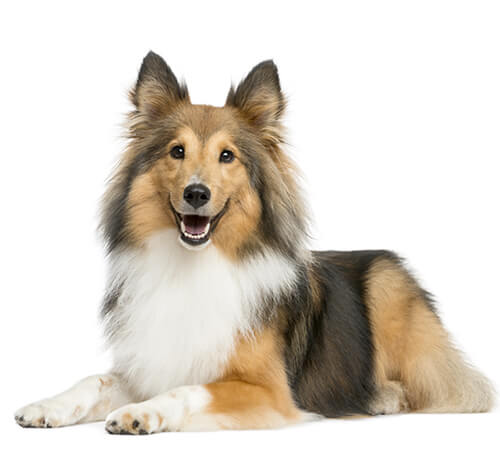
shetland sheepdog
Other names: Sheltie
Sheltie (Shetland Sheepdog) – a native of northeast Scotland; cheerful companion, responsible nanny and devoted friend.
| Nasod nga gigikanan | Scotland |
| Ang gidak-on | average |
| Pagtubo | 35-37 cm |
| Timbang | 6.8-11.3 kg |
| Age | hangtod sa 16 ka tuig |
| FCI breed nga grupo | shepherd and cattle dogs |
Kaundan
- Panguna nga mga gutlo
- Kasaysayan sa lahi sa Shetland Sheepdog
- Video: Shetland Sheepdog
- Appearance of the Shetland Sheepdog
- Photo of adult Shetland Sheepdog
- Shetland Sheepdog character
- Shetland Sheepdog Training and education
- Pag-atiman ug pagpadayon
- Health and disease of the Shetland Sheepdog
- Sa unsa nga paagi sa pagpili sa usa ka itoy
- Photos of Shetland Sheepdog puppies
- How much does a Shetland Sheepdog cost
Panguna nga mga gutlo
- Representatives of this breed are very similar to collies, although they are almost twice as small.
- Ang tanan nga Shelties hilabihan ka talagsaon, mao nga dili nila palabyon ang oportunidad nga makaila sa bisan kinsa nga representante sa fauna nga ilang mahimamat sa ilang dalan.
- They are ranked 6th in the list of the smartest breeds on the Stanley Coren scale.
- The soft, downy undercoat of the Sheltie is highly valued by knitters. Things knitted from dog hair have a healing effect and in appearance practically do not differ from products made from industrial yarn.
- The breed is equally suitable for keeping in families, and for single people.
- Adults have an inexhaustible supply of energy and need good walking and regular exercise.
- Shelties are quite noisy pets, who do not deny themselves the pleasure of barking loudly and relish, so lovers of silence should look after a more phlegmatic four-legged friend.
- Shetland Sheepdogs excel in agility and other competitive sports. They feel great in the circus arena, as well as participants in various dog shows.
- The animal perceives frequent and prolonged absences of the owner as a serious problem, therefore, shelties are strictly contraindicated as pets for workaholics who disappear for days at work.
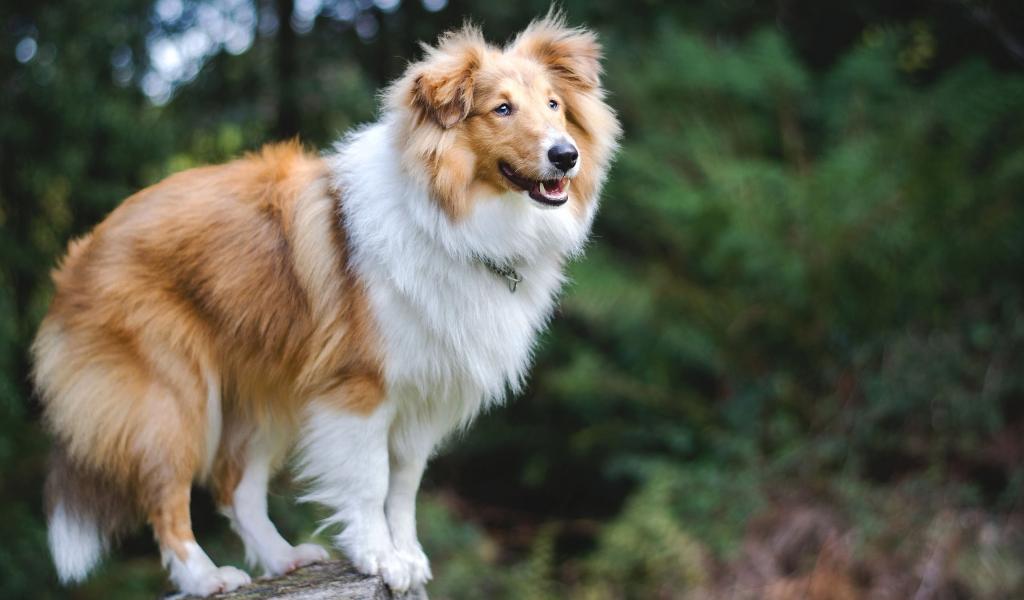
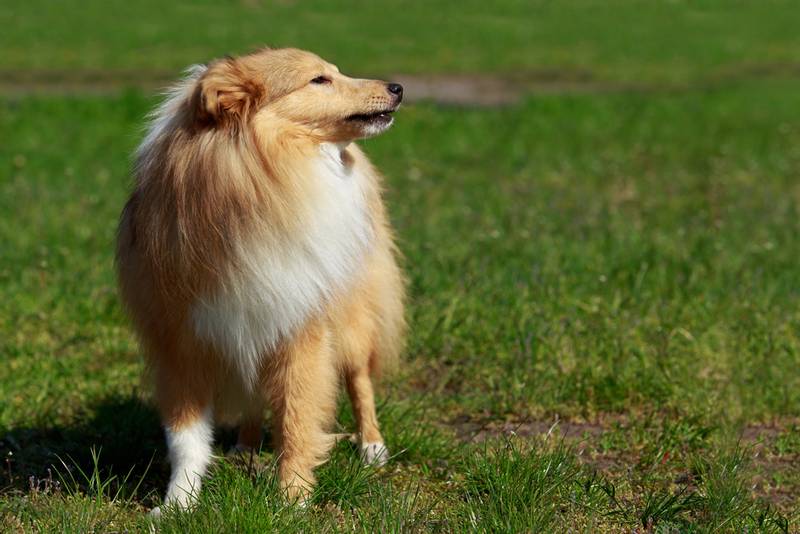
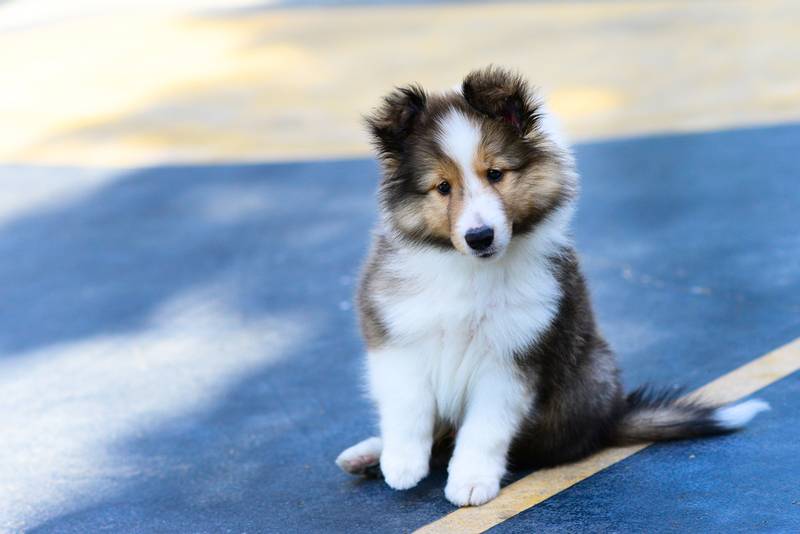
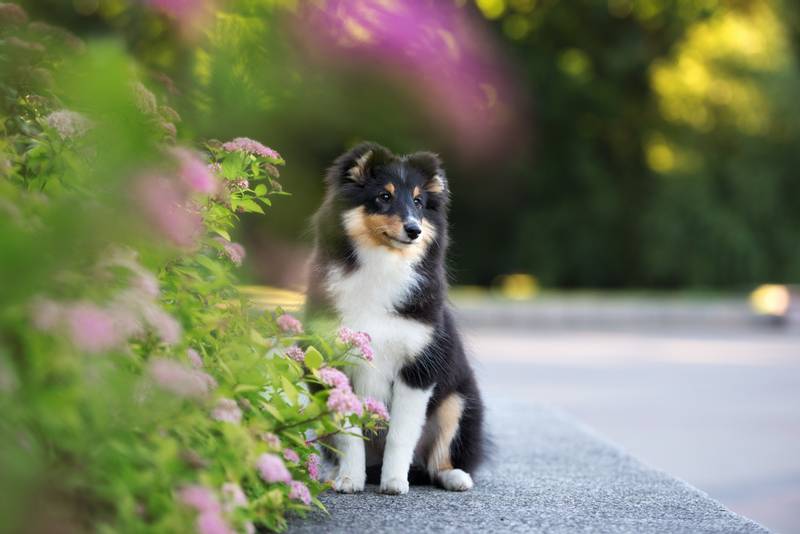
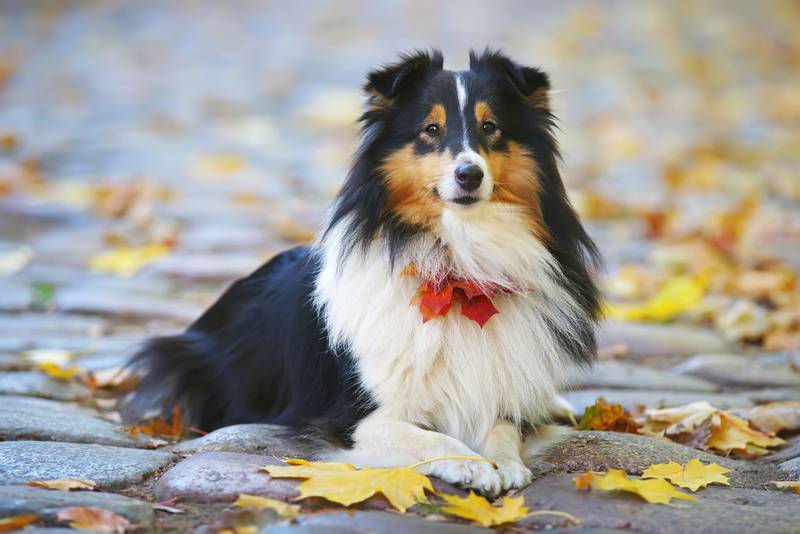
sheltie is a loving fluffy with a conflict-free character, a bewitching smile and an endless self-esteem, which you just want to hug. From a real shepherd in today’s shelties, only a passion for walking and a sonorous, boisterous barking remained, which, however, did not spoil them at all. Moreover, in just a few decades, these Shetland clever women managed to radically change their “qualifications”, having gone through a difficult path from modest rural shepherds to real townspeople.
Kasaysayan sa lahi sa Shetland Sheepdog
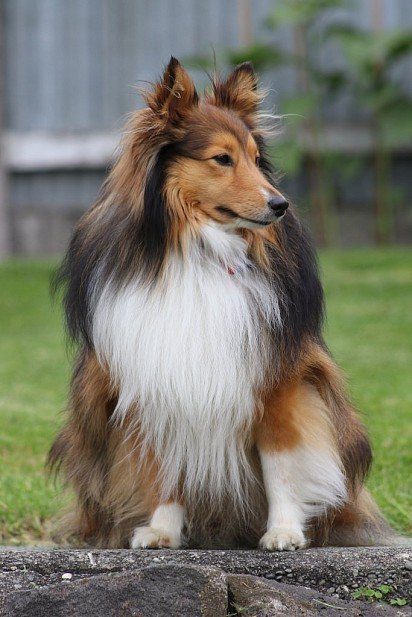
The Sheltie is native to the northeast of Scotland, more specifically the Shetland Islands. The distant ancestors of sheep dogs moved here along with the first settlers who were looking for fresh pastures for sheep flocks. Mastering new territories, dogs freely crossed with Spitz living on the islands, inheriting their spotted colors and light, fluffy coat. Later, border collies , king charles spaniels and other continental breeds contributed to the development of the shepherd phenotype .
The main activity of the Sheltie was herding. Small dogs deftly managed with small herds of sheep, zealously tracking their movement and urging animals that had strayed from the herd. However, in the 19th century, British farmers became interested in breeding and brought out several especially large sheep breeds. The farms grew and developed, the sheep brought a good offspring, but the poor shelties were out of work. Giant sheep categorically refused to obey the small and nimble dogs, as a result, the animals were exhausted, and the flocks continued to scatter over the pasture. Soon, the miniature shepherds were replaced by larger and more enduring shepherd dogs, and the Sheltie genus began to inevitably fade away.
British enthusiasts volunteered to save the degrading Sheltie. In 1908, breeder James Loggy founded the first club of breed lovers, whose headquarters was in Lerwick (the capital of the Shetland Islands). He also made attempts to standardize the appearance of animals. According to Loggy’s idea, the breed was to be called the “Shetland Collie”, which caused discontent among breeders of real Scottish Collies . To avoid disputes and misunderstandings, the dogs were eventually renamed Shetland Sheepdogs.
At the beginning of the 20th century, Shelties reached America, where they made a splash. At the same time, in the cynological environment, dogs continued to remain as “poor relatives”, not recognized by any association. The natives of the Shetland Islands managed to go through the standardization procedure and get the coveted approval of the “KS” only after the end of the Second World War, in 1948.
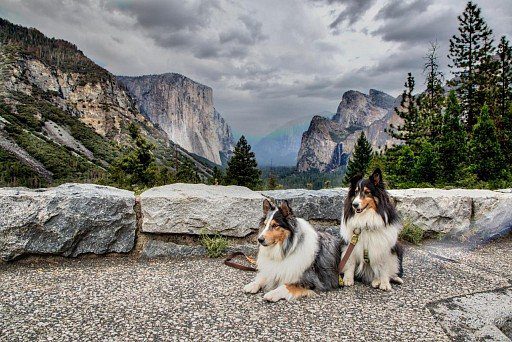
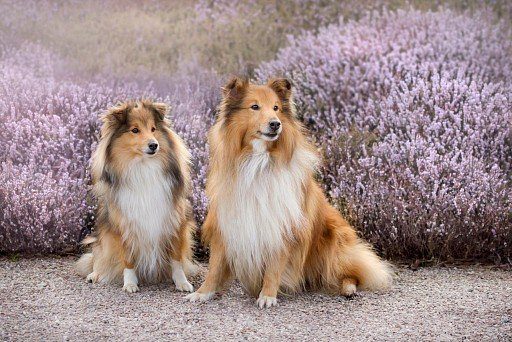
Video: Shetland Sheepdog
Appearance of the Shetland Sheepdog
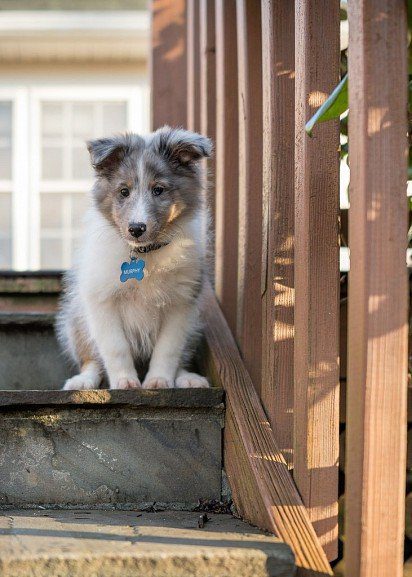

At first glance, the Sheltie is a light version of the Scottish Collie. Animals have the same long silky hair, pointed muzzle and penetrating eyes. Shelties owe their resemblance to this “legend” of British cynology to the experiments of breeders who, in an attempt to stabilize the breed qualities of shepherd dogs, actively mated them with rough collies.
As for the modest size of dogs, they can be regarded as the result of adaptation to the environment. The ancestors of the Shetland Sheepdogs, who lived in the archipelago, were not spoiled with a hearty meal, and the weather conditions in the north of Britain leave much to be desired. The average weight of an adult Sheltie is 5-10 kg. Often the animals do not fit into the given framework, gaining a few extra pounds, which the breeding commissions turn a blind eye to. At the same time, the height of the animal is a constant value and fixed by the standard: for females – 35.5 cm, for males – 37 cm. Deviation in any direction by more than 2.5 cm is considered a defect and automatically excludes the dog from the “exhibition caste”.
ulo
The head of the Sheltie is graceful, proportional, in the form of a blunt wedge, tapering towards the nose. The skull is flat, without a pronounced occipital protuberance. The lines of the forehead and muzzle are parallel to each other. There is a small stop. The cheekbones are flat at the muzzle and slightly rounded at the skull.
Shetland Sheepdog Nose
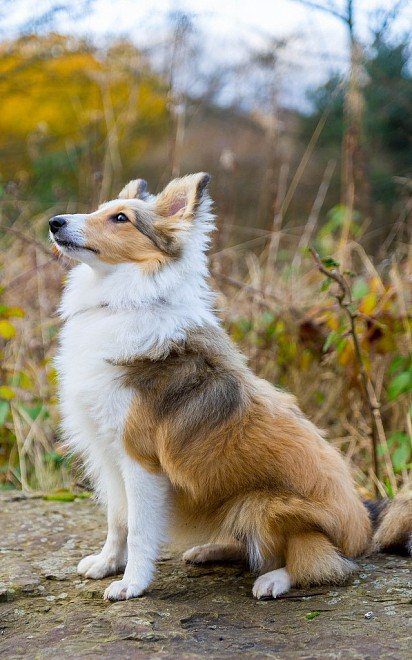

The lobe is small, black.
Ngipon ug apapangig
Sheltie’s jaws are even, developed. Bite – deep “scissors”. It is desirable to have a complete set of healthy teeth (42).
Mga igdulungog
The small ears of the Sheltie are located at a close distance from each other. In a calm animal, they are folded and laid back. In an alert shepherd dog, the ears are raised and look forward, while the tip of the ear cloth remains lowered.
Mata
Medium, almond-shaped, set slightly obliquely. The skin of the eyelids is black. The hue of the iris is dark brown, in marbled individuals it is blue or brown with blue specks. Look attentive, inquisitive.
Ang liog
The Sheltie’s neck is elegant, well arched and muscular.
Shetland Sheepdog Body
Straight back with a graceful curve in the lumbar region and a rounded croup. The chest is deep, with well arched and tapering ribs.
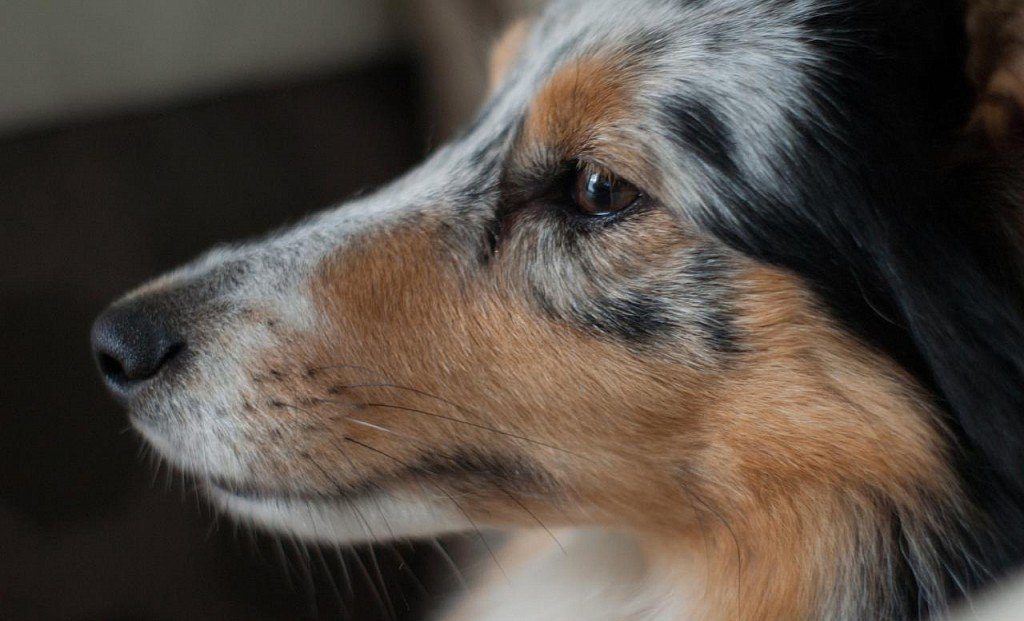

mga limbs
The front legs of the Sheltie are even, with the shoulders laid back, equal in length to the shoulder blades. The pasterns are strong, the shoulder angles are quite pronounced. The hind limbs are straight, with muscular, massive thighs. The hocks are low and well angulated. Paws in the form of an oval with tightly adjacent to each other, arched fingers. The movements are smooth, flying.
Buntag
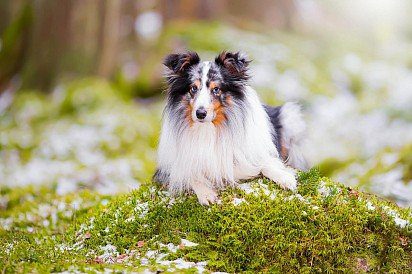

Long-haired, set low and reaching to the hock. The tail of the Sheltie is not curled, in a moving dog it may be slightly raised, but not above the line of the back. The tip has a slightly curved line.
Shetland Sheepdog Wool
The coat of the Sheltie is of a double type: with a coarse and long outer coat and a soft, dense undercoat. In the neck area, the integumentary hair forms a lush mane, the hips of the animal hide wide “pants”. On the back of the forelimbs there are long “feathers”.
Kolor
The following types of Shetland Sheepdog colors are fixed by the breed standard:
- sable – dark and light options;
- tricolor / tricolor – black body with brown-reddish tan marks;
- blue merle – silver-blue background with a light black speck (marble color);
- black and white – with white markings on the forehead, neck, tip of the tail, chest and legs;
- black with brown – with or without white markings.
Undesirable: wolf and gray colors, awn of asphalt and rusty shades, as well as the presence of white spots on the body of bicolor animals and large black marks on the coat of marbled individuals.
Mga depekto ug mga depekto sa lahi
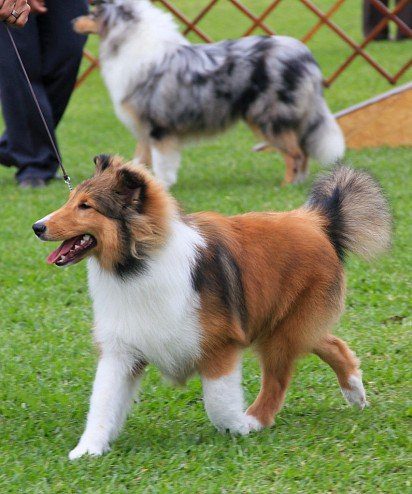

Any deviation from the breed standard is regarded as a defect. For example, in order to be blacklisted by the breeding commission, it is enough for a Sheltie to have light eyes (with the exception of individuals of a marble color), erect or hanging ears and an incorrect bite. Serious defects that spoil the appearance of the breed are:
- clubfoot;
- short, curly or wavy coat;
- lack of pronounced undercoat;
- too short or twisted tail;
- incomplete set of teeth;
- convex or vice versa – curved back;
- bovine postav sa mga bukton;
- dominant white color;
- the nose is beige or pink;
- short snout.
Photo of adult Shetland Sheepdog
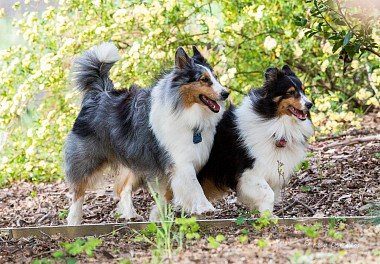

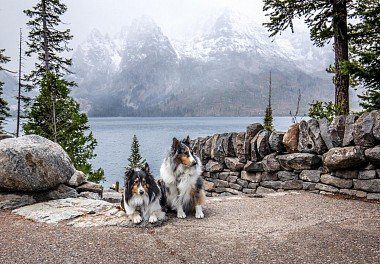

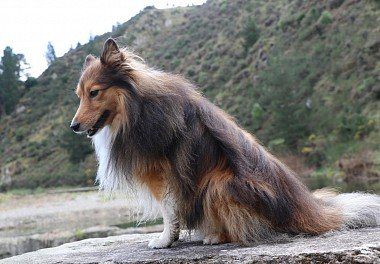

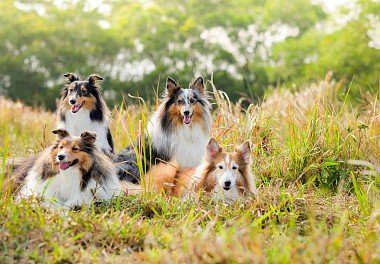

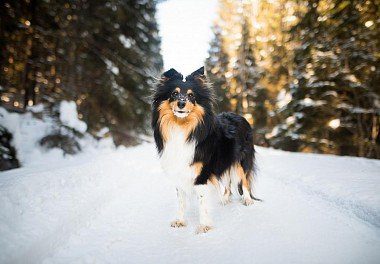

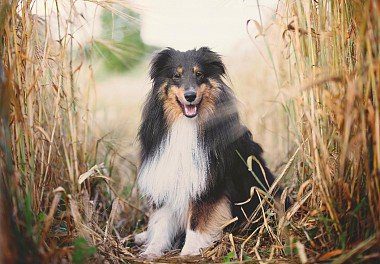

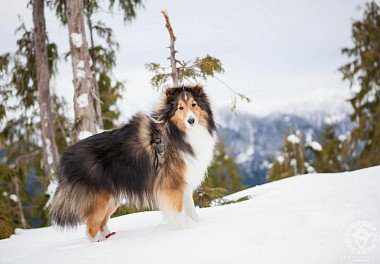

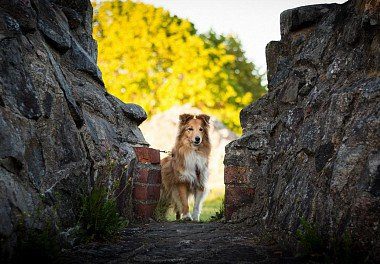

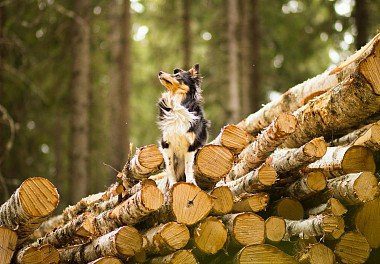

Shetland Sheepdog character
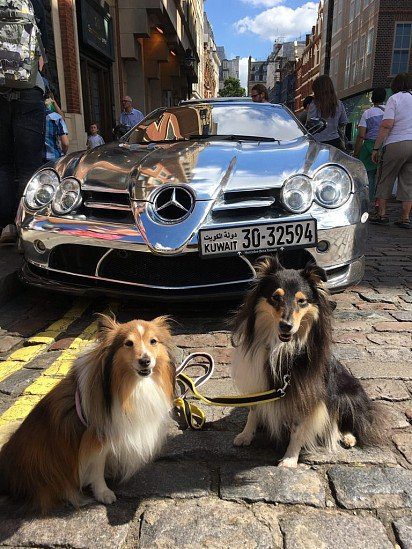

Sheltie is the standard of a pet. These delicate smart girls, who can read the mood of the owner at a glance, are able to melt even the most callous heart. Most literary sources position Shetland Sheepdogs as family animals, which is not entirely true. In fact, a Sheltie can only be truly devoted to one person. Of course, in relation to other household members, the dog is also capable of experiencing respect and affection, but it will still choose one person as the object of its adoration. To buy a Sheltie, obeying a momentary impulse, is not the most prudent act, since to give away or resell such an animal means dooming it to melancholy and despair. Believe me, there is no sadder sight than a sheltie, by the will of fate, abandoned in a dog shelter.
Due to their natural shyness and vulnerability, Shetland Sheepdogs require the most delicate handling. Yes, these fluffy handsome men are obedient and efficient, but only until the owner starts to go too far. Dogs cannot stand hard pressure and will not do anything under pressure.
Shelties make, if not ideal, then quite good nannies. In children, shepherd dogs literally do not have a soul and are ready to “graze” them for days on end. But even with such a positive scenario, breeders do not recommend overloading the dog with “pedagogical” activities, especially when it comes to small children who have no idea about the rules of behavior with animals.
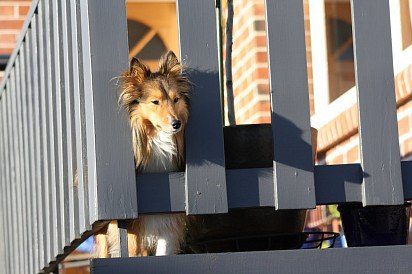

Despite their generally good-natured nature, Shelties are not immune to excessive suspicion. This is most clearly manifested in relationships with strangers, whom shepherd dogs are frankly afraid of. At the same time, barking at a stranger or a random passerby who has fallen into the field of view is only a joy for a dog. Conflicts with other representatives of the dog clan, the natives of the Shetland archipelago prefer to resolve peacefully. Sheltie entering the fight with the enemy is a rare phenomenon and in some ways even unique.
Shetland Sheepdogs are always responsible for the owner and his property, so if you are looking for a reliable watchman for your own apartment, take a closer look at these sonorous fluffies. Just do not overdo it with the burden of responsibility: sitting alone for days, guarding the owner’s property, is a real punishment for active and playful Shelties.
Representatives of this breed love to play, and it doesn’t matter to them what, the main thing is that their beloved owner participates in the process. At the same time, the dog will not impose its society. If a Sheltie is refused to play and communicate with, he will take a position of withdrawal and will patiently wait for the moment when the owner deigns to pay attention to him.
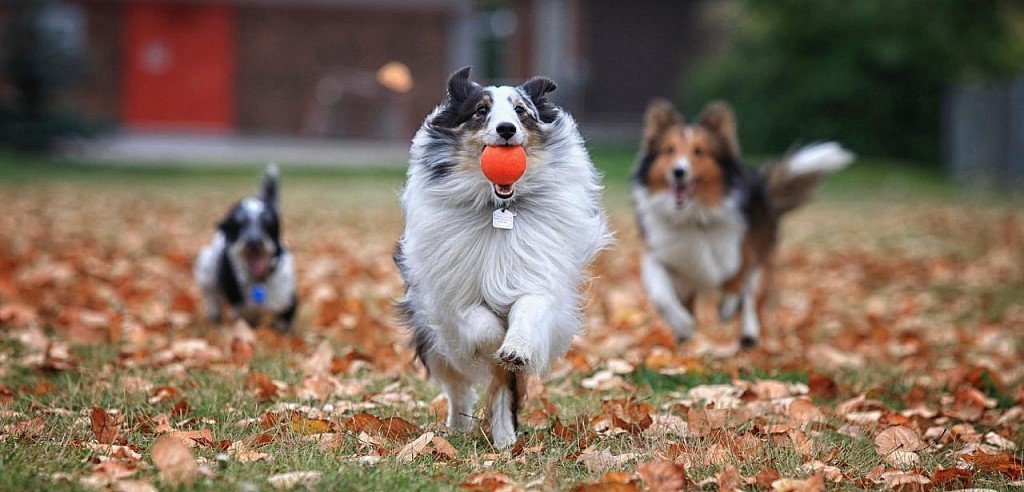

Only playing ball with other dogs!
Shetland Sheepdog Training and education
A high level of intelligence, developed intuition and an almost manic desire to please the owner could make perfect students from Shelties, if not for their natural timidity. Of course, among the representatives of this glorious family there are also real “lion hearts”, but this is rather an exception to the general rule. The main factors that prevent Shetland Sheepdogs from breaking out into excellent students are extraneous noises and the fear of causing discontent of the owner. In the first case, fear is caused by any unfamiliar source of noise, from public transport to youth companies. Such phobias are treated by repeated modeling of a dangerous – from the point of view of the pet – situation. If a Sheltie is dying of fright at the sound of roaring engines, take him for a walk near the freeway. Cowards fleeing at full speed from the opening doors of the bus,
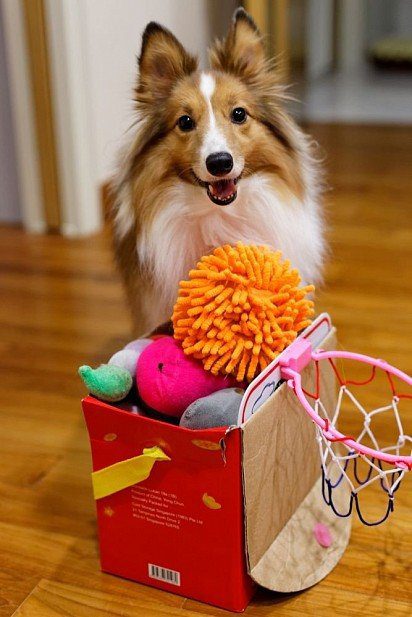

Self-doubt is more difficult to eradicate, therefore, at the initial stage of training, experts recommend using the method of positive reinforcement. The essence of the technique is not to react to the mistakes of the pet, but to always notice and encourage his successes. Later, when the dog gets used to it a little and stops shaking over every mistake made, you can move on to command technique. By the way, according to the trainers, five times repetition of the command is enough for the Sheltie to remember it for life.
An important point: only one person should be engaged in the training of a Sheltie living in a family.
Shelties have a reputation for being extremely affectionate and sociable pets, but this is no reason to raise them in an atmosphere of permissiveness. The animal must understand that it is not the center of the universe, and the owner is not a performer of dog whims. It is especially important to form this belief in males, which by their nature are prone to leadership. It has been noticed: spoiled and having time to feel their own privilege, Shelties execute commands every other time and only according to their mood.
There are several ways to let the dog know who is the real owner in the house:
- do not let the pet lie on your bed or sofa: the place of any dog is on the floor, even such a charming one as a sheltie;
- always enter the room first – animals regard this as the right of the leader;
- do not throw treats to your dog from your own table and wean him from begging.
The age from 2 to 4 months is the most productive for the socialization and upbringing of a pet. Two-month-old puppies are already able to remember their own nickname and respond to it, as well as understand the meaning of the “Fu!” command. If a future champion is growing in the house, then at this age you can begin to master the exhibition stand. From four months, the lessons gradually complicate: now the puppy must learn the commands “Come to me!” and “Near!”. Six-month-old individuals can be slowly involved in sports activities and OKD (General Training Course). On walks, teenagers are given the opportunity to properly run (preferably uphill) and jump over obstacles, which has a positive effect on the development of extensor muscles. By the age of 9 months, Shelties are already strong and hardy enough to start training in agility and sports herding.
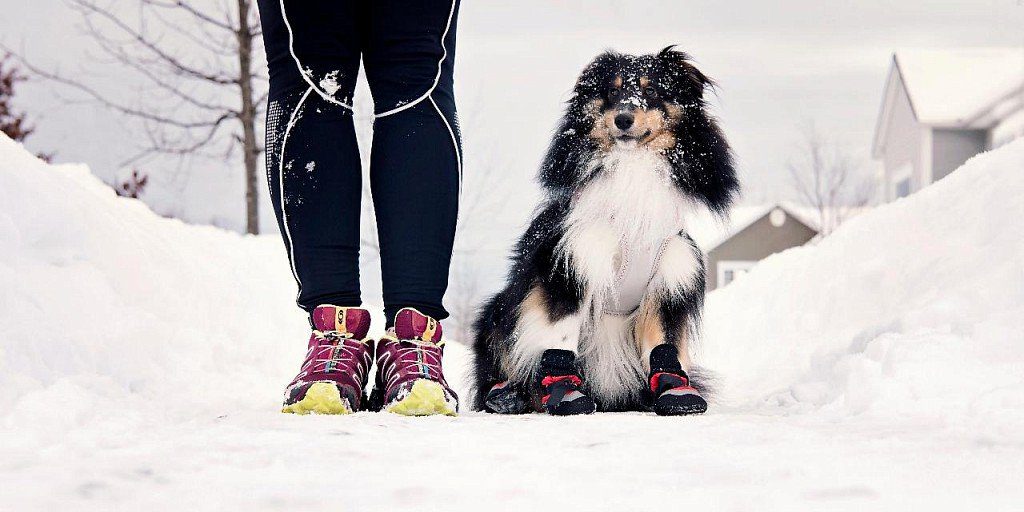

Pag-atiman ug pagpadayon
Despite the glamorous appearance, the Sheltie is not a decorative fluffy, designed to serve as an interior decoration. Yes, and experts unanimously say: an animal whose existence is reduced to constant vegetation in an apartment in anticipation of a late owner will not last long. And this means that a good dog walk is vital. Ideally, an adult pet should spend at least 3 hours a day outdoors. For males, longer and more frequent walks are preferred, as Sheltie males mark their territory abundantly.
Puppies are taken out for a walk three times a day and only in good weather, while the duration of each walk should not exceed 30 minutes. In winter, it is more expedient to reduce the time spent by the baby in the fresh air in order to avoid hypothermia. On dank autumn days, it is better not to abuse the promenades. Of particular danger are slippery ice paths, on which the puppy’s fragile paws spread in different directions, as a result of which the dog develops an incorrect set of limbs.
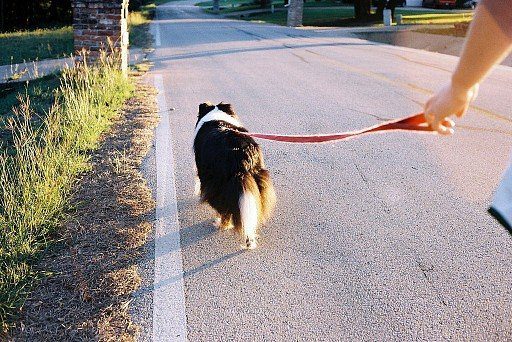

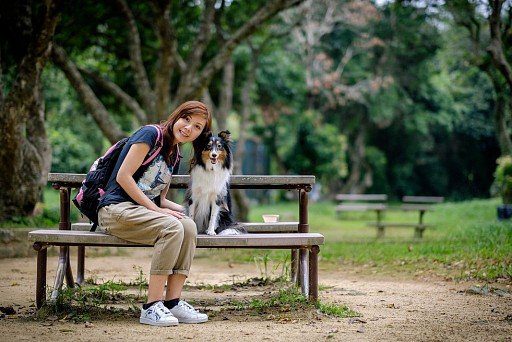

Rules for handling a Sheltie puppy, which will help maintain a presentable appearance of the animal:
- do not let the baby clog under low horizontal surfaces – this can provoke dislocations of the limbs in him;
- in order to avoid the formation of an incorrect position of the croup, puppies up to 3 months are taken out for walks on their hands (relevant for dogs living in high-rise buildings);
- it is forbidden to stroke the young Sheltie on the head, as such actions interfere with the development of the correct set of ears.
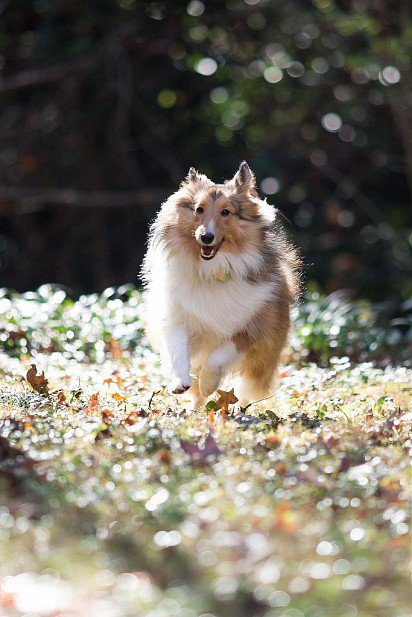

Shetland Sheepdog Hygiene
The main “horror story” with which experienced sheltie fans like to intimidate newly-made shepherd dog owners is the seasonal molting of animals. Allegedly, during this period, the apartment turns into one large warehouse of dog hair, for cleaning which you will have to hire a group of cleaners armed with brushes and vacuum cleaners. Professional breeders, on the contrary, actively shield their pets, hinting that wool incidents occur only with lazy owners who do not bother to brush their dogs regularly. The truth, as usual, is somewhere in between. Of course, shepherd dogs have a lot of wool and it falls abundantly, but comparing the Sheltie’s seasonal molting with a natural disaster is a clear exaggeration.
Usually, Shetland Sheepdogs are combed every other day, and this is done in layers, starting from the study of the outer hair, gradually getting to the dense undercoat. Moulting individuals must be “treated” twice a day, in the morning and in the evening.
An interesting fact: a nice bonus for anyone who is sensitive to smells is that the clean and dry Sheltie coat almost does not smell like a dog. A light canine “aroma” can only come from an animal that has been caught in the rain and thoroughly soaked.
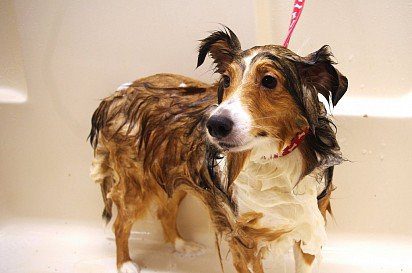

Shelties are bathed once every 2-3 months using moisturizing shampoos and conditioners. If for some reason it is impossible to organize a bath for a pet, you can limit yourself to dry washing. Before exhibitions, show-class individuals should be taken to a professional groomer, while pet owners will be able to trim their pets themselves.
Pay attention to the cleanliness of the dog’s ears and eyes, removing dirt accumulated in them with cotton swabs and clean wipes. Particular attention should be paid to the area behind the ears, where the hair quickly gets dirty and can stray into tangles, weighing down the ear cloth and interfering with its proper placement. To remove plaque, it is recommended to purchase veterinary paste and a special brush for dogs. If there are none in the veterinary pharmacy, they can be easily replaced with a regular brush with soft bristles and tooth powder.
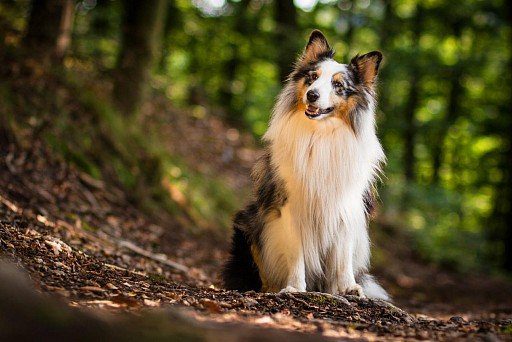

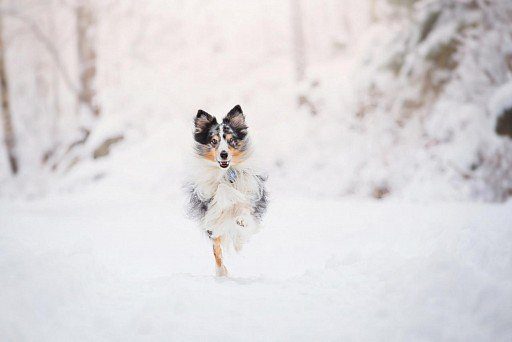

Pagpakaon
The basis of the Sheltie’s diet, which is naturally fed, should be animal protein. Meat is best offered raw, cut into portions. Two-month-old babies are given meat in the form of a scraper (frozen and grated on a coarse grater). Sea fish is preferred. Adults will be satisfied with raw fish carcasses with the head and fins previously removed. If you are trying to treat a puppy with a fish, then it is better to crank it through a meat grinder.
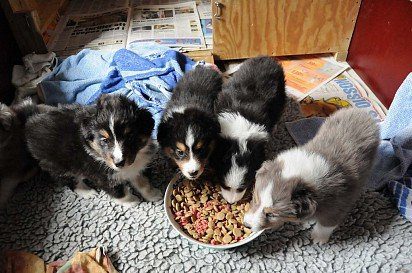

Sour-milk products, cheeses, cereals and fruit and vegetable purees will also successfully complement the dog’s diet. From time to time, the Shetland Sheepdog can be treated with a piece of rye bread soaked in meat broth or kefir. Shelties and all kinds of berries are respected, so sometimes it is useful to pamper your pet with freshly picked raspberries or strawberries. As a source of vitamins, it is recommended for dogs to add any greens (parsley, lettuce, dill) to the food, which can be replaced with young nettles or dandelion leaves soaked in salt water.
Foods that can harm Shelties:
- confectionery and any sweets;
- tubular nga mga bukog;
- pasta and bakery products made from wheat flour;
- legumes and potatoes;
- spicy, smoked and salty dishes.
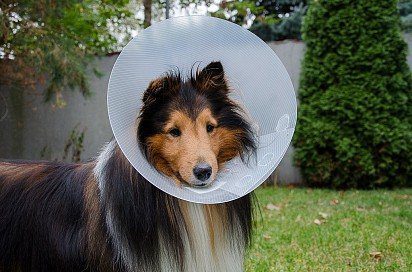

Health and disease of the Shetland Sheepdog
The Sheltie is considered a fairly healthy breed, whose representatives easily live up to 10-15 years. However, shepherd dogs still have a predisposition to certain types of diseases. Most often, Shelties suffer from dysplasia, hypothyroidism, eye diseases (cataracts, torsion of the eyelid) and epilepsy. They also have such ailments as histiocytoma, congenital deafness, dislocation of the elbow, and Willenbrand-Dian disease.
Sa unsa nga paagi sa pagpili sa usa ka itoy
Choose plump, fluffy and smelly babies. The eyes of a healthy puppy should not be watery, and the area under the tail should be clean, without signs of diarrhea. Animals coughing and actively scratching themselves are a clear sign that not everything is going smoothly in the kennel. Another reason to be wary is the promises of the breeder to sell you an exhibition “copy” of the puppy. In fact, a breeder is not able to predict the career of his pet, even if he is born from third generation interchampions. If the seller tries to convince you of the opposite, most likely he does not have much experience in breeding.
To check the reputation of the institution, you can demand from its management an act of inspection of the litter, which is compiled by RKF specialists. The presence of this document by the breeder is a guarantee that your pet will be registered with the kennel association. Acquaintance with the puppy’s parents is also a good safety net, which makes it possible to discern in the baby the show potential or its absence.
If your goal is a show class Sheltie, ask the breeder for a puppy weight gain chart (Kathrin Riemann method). Animals that have gained no more than 900 g in weight over the past 3 weeks promise to fit into the breed standard in the future. From not gaining weight or too actively growing babies, nice pets can also turn out, but they will most likely be closed to exhibitions.
It is important to determine in advance the gender of the puppy, since the nature of Sheltie males and females differs markedly. Boys are more difficult to train (the manners of the leader of the pack affect), while girls are more flexible and inquisitive. At the same time, as the pets grow older, the situation changes. Sexually mature bitches become very cunning and can be self-willed, so they will have to look for new approaches in handling them. The main “trump cards” of the girls are a friendly disposition, a strong attachment to the house and the owner, as well as quick adaptability to changing living conditions. Sheltie males are outwardly more spectacular than girls and are much more active. In addition, unlike bitches, they are good at distributing their own love among all family members.
An interesting fact: despite the fact that females are significantly inferior to males in terms of appearance, the price tag on them is always higher.
Photos of Shetland Sheepdog puppies
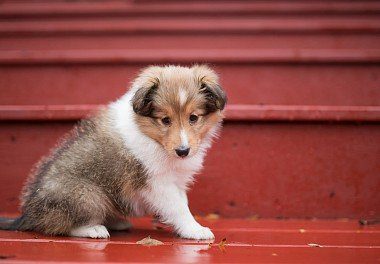



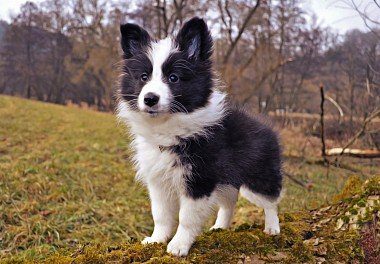

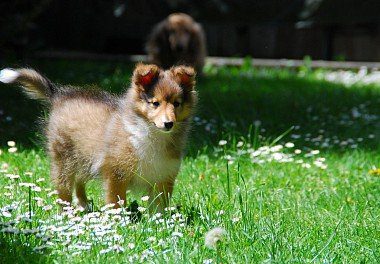

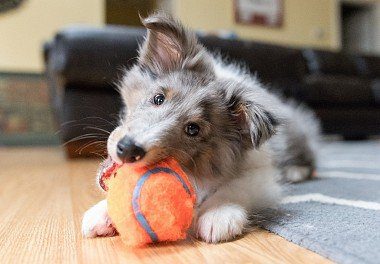

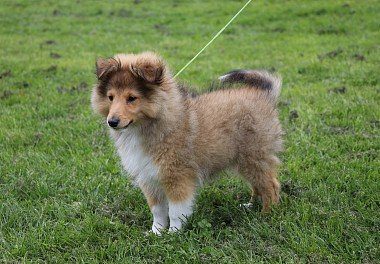

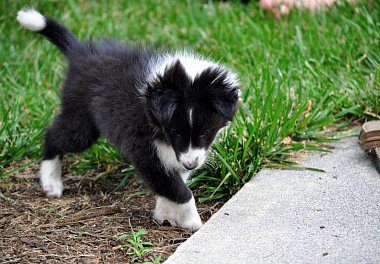

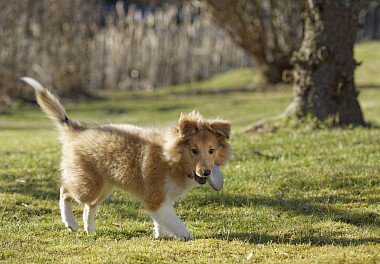

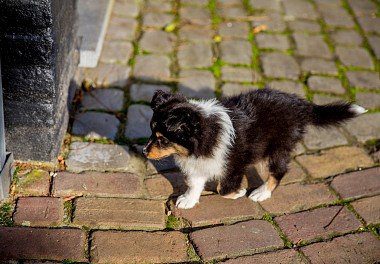

How much does a Shetland Sheepdog cost
The cost of a Sheltie puppy directly depends on its class, coat color and gender. The most expensive types of colors are bicolor (black and white) and bimel (silver-blue background with white markings). The sable color is considered quite common, so such individuals are much cheaper.
The average price tag for a Sheltie puppy from domestic breeders is 400 – 600$. Animals with defects in appearance, as well as dimensions that go beyond the breed standard, are sold for 150 – 250$.





